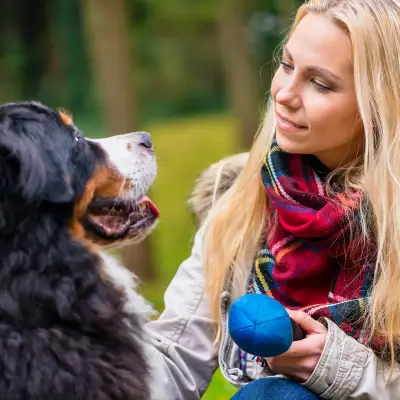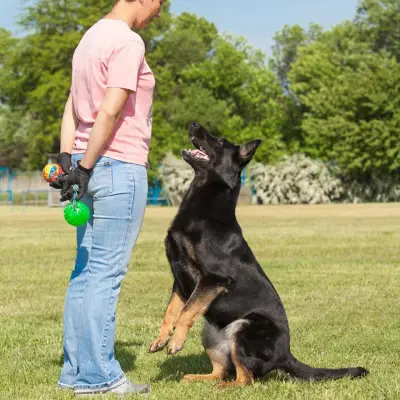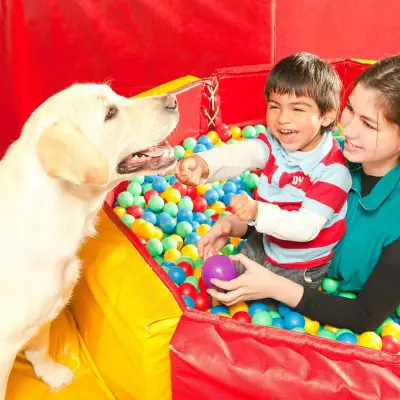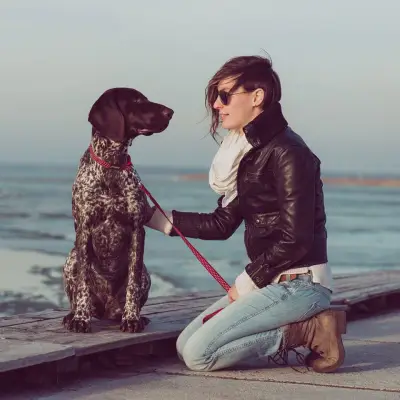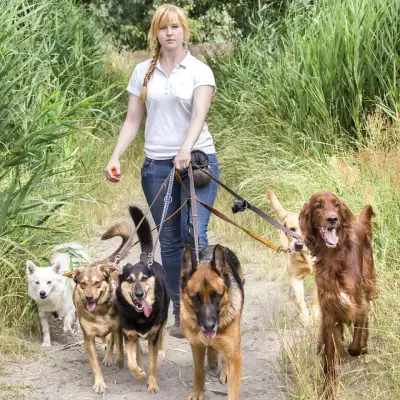If you've ever noticed your dog becoming restless or distressed when you're about to leave the house, you might be witnessing signs of separation anxiety. This condition can lead to various behavioural issues, but the good news is, it's manageable.
In this comprehensive guide, we'll explore separation anxiety in dogs, identify its symptoms, delve into its causes, and provide practical advice on how to help your furry friend. Whether you're a long-time dog owner or considering adopting a puppy, understanding and managing separation anxiety is key to fostering a happy, healthy relationship with your pet.
Jump to:
What is Separation Anxiety in Dogs?
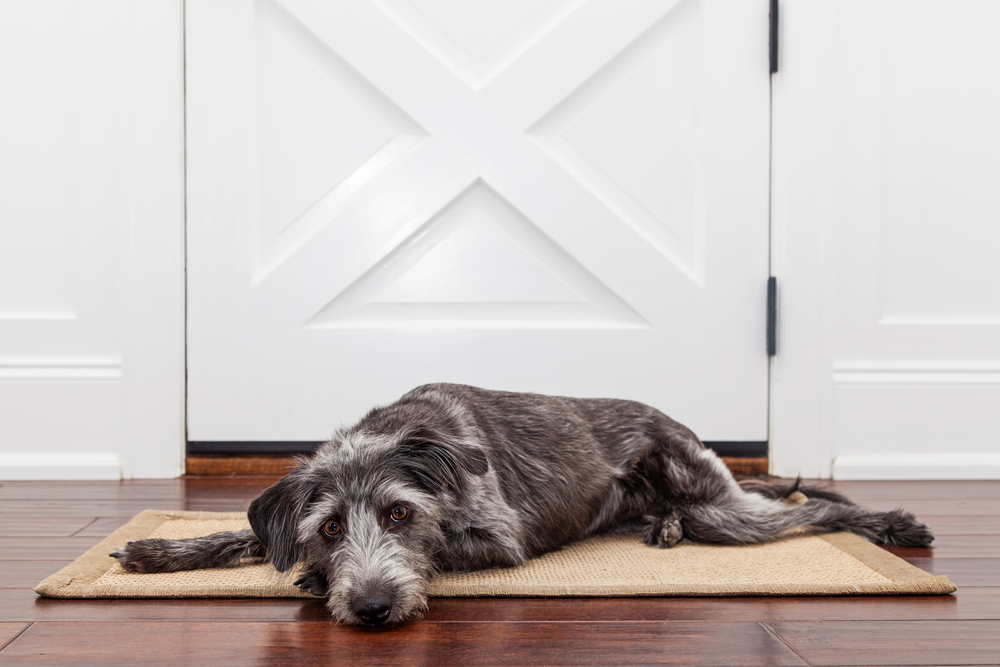
Separation anxiety in dogs is a condition where they exhibit stress and behavioural problems when separated from their owners or left alone. It's more than a little whimpering; it's a serious issue that can affect your dog's mental and physical health.
Signs and Symptoms of Separation Anxiety in Dogs
The signs of separation anxiety in dogs can vary widely but typically include behaviours that indicate distress when their owner is not around. These can range from mild to severe and include:
- Excessive barking or howling
- Destructive behaviours like chewing furniture or scratching at doors
- Pacing or restlessness
- Accidents in the house, despite being house-trained
- Attempting to escape from the house or crate
- Excessive drooling or panting
- Change in appetite
- Following you relentlessly
- Whining or crying
- Noticeable change in behaviour
Causes of Separation Anxiety in Dogs
The root cause of separation anxiety in dogs can vary. Some potential factors include:
- A change in routine or environment, such as a move to a new house or a change in the owner's work schedule
- A traumatic event, like a long period spent in a shelter or the loss of a family member
- Lack of training or socialisation
- Breed predisposition - some breeds are more prone to anxiety and stress
- Early Weaning - puppies that are weaned too early from their mothers may develop separation anxiety, as they haven't had enough time to learn coping mechanisms.
- The addition or loss of a family pet or significant changes in the family structure, like a new baby, can upset a dog's sense of security and lead to anxiety.
- Sudden shifts in their daily schedule—like a change in the timing of walks or feeding—can trigger anxiety, as dogs thrive on routine.
- Not meeting exercise needs in dogs with high energy levels or specific breeds that require more physical activity.
- Overattachment - dogs that haven't been taught to spend time alone comfortably may develop an overattachment to their owners, leading to anxiety when separated.
How to Help Dogs with Separation Anxiety
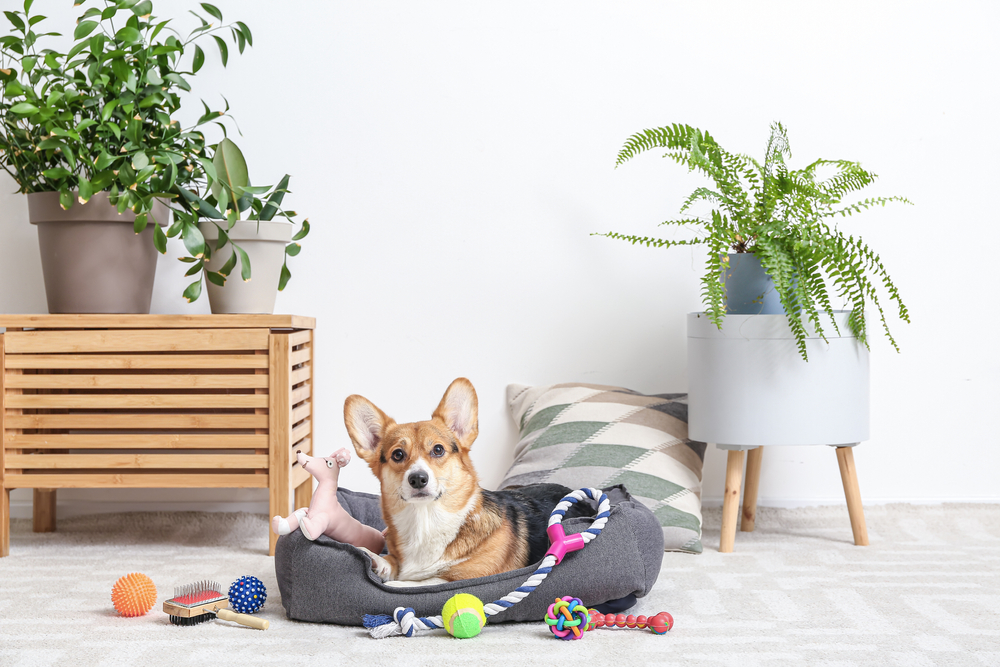
If you think your dog is suffering from separation anxiety, here are some things you can do to help:
1. Create a Safe and Comfortable Environment
Make sure your dog feels secure and comfortable when you’re not around. This sense of safety can significantly reduce anxiety levels. Here’s what you can do:
- Personalised Safe Space: Designate a specific area in your home as your dog's safe space. This could be a quiet corner with their bed, favourite toys, and blankets that smell like you. The familiarity and comfort of these items can be soothing to your dog.
- Crate Training: If your dog responds well to a crate, it can serve as a secure den where it can retreat when feeling anxious. Include comfortable bedding and safe toys to ensure the crate is a positive, inviting space.
2. Begin Gradual Desensitization
Gradually accustoming your dog to being alone is key to managing separation anxiety. This method teaches them that solitude is temporary and not something to fear:
- Short Absences: Start with absences so brief that your dog doesn’t become anxious, and then gradually extend the time you’re away.
- Predictable Patterns: Before leaving, use a specific routine that signals to your dog that you’ll return. Over time, these cues can help reduce their anxiety.
3. Encourage Exercise and Mental Stimulation
Physical activity and mental engagement are essential in calming the effects of separation anxiety:
- Regular Exercise: Daily walks, runs, or play sessions help expend pent-up energy and promote a calm state of mind.
- Mental Stimulation: Puzzle toys, treat-dispensing games, and interactive activities can keep your dog’s brain engaged and distract them from the stress of your absence.
4. Seek Professional Help
Sometimes, the expertise of a professional is necessary to address and manage separation anxiety effectively:
- Behavioural Specialists: A certified dog behaviourist can assess your dog’s specific situation and develop a tailored behaviour modification plan.
- Veterinary Advice: For severe cases, consult with your veterinarian. They can evaluate whether medication might be appropriate and use behavioural strategies to reduce your dog's distress.
5. Embrace Learning
Understanding the underlying causes and nuances of your dog's separation anxiety is key to effective management. Knowledge empowers you to make informed decisions about your dog's care and well-being:
- Educational Resources: Read reputable books, articles, and online resources to understand separation anxiety better. This knowledge equips you with the insights needed to identify specific triggers and signs of anxiety in your dog.
- Professional Courses: Consider enrolling in structured educational programs like the Understanding Canine Anxiety Diploma Course (just £29!) offered by Centre of Excellence. This course delves into the psychological aspects of canine anxiety and offers comprehensive strategies for mitigation and management.
Treatment and Management Strategies
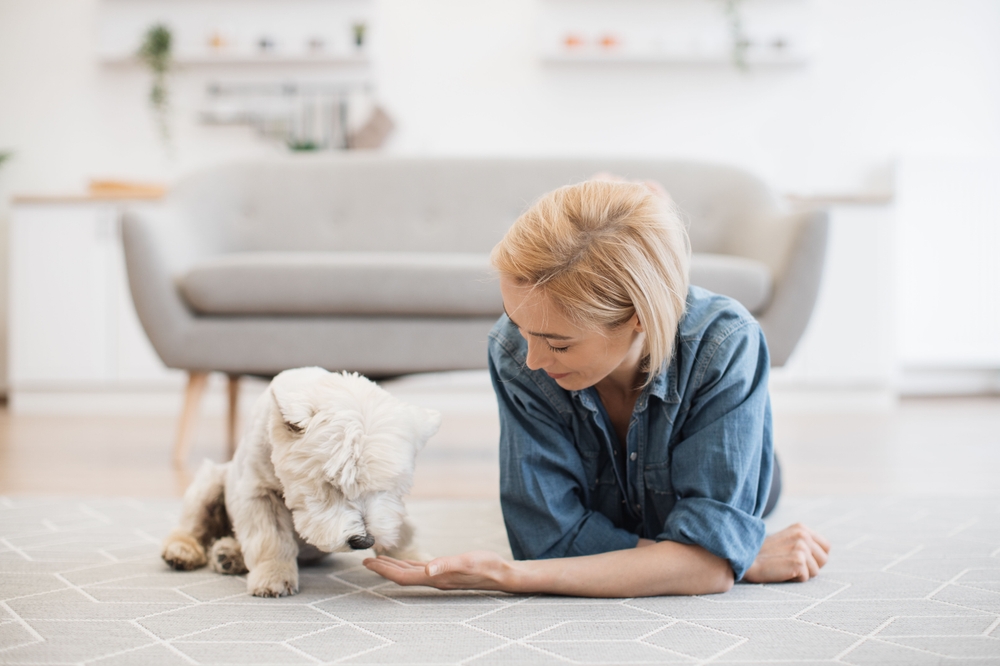
Dealing with separation anxiety in dogs requires a thoughtful blend of patience, understanding, and strategies. Tailoring a comprehensive approach can make all the difference in improving your dog's well-being and your peace of mind. Here are some effective treatment and management strategies:
Training and Behavioural Therapies
Training programmes tailored for dogs with separation anxiety are invaluable. These are designed to meet your dog's unique needs, focusing on building their independence and boosting their confidence when alone. Here are a few techniques commonly used in these training programmes:
- Gradual Desensitisation: This technique involves slowly acclimatising your dog to your absence, starting with very short departures and gradually increasing the duration over time. It teaches your dog that being alone is safe and that you will return.
- Counter-Conditioning: This strategy aims to change your dog’s negative reaction to being alone to a positive one. This could involve leaving your dog with a special treat or toy they only get when you're gone, associating your departure with something enjoyable.
- Crate Training: For some dogs, a crate can provide a sense of security. It becomes their safe space, where they can relax when you're not home. Crate training should be done gradually and positively to ensure your dog views the crate as a safe haven, not a punishment.
Medication for Separation Anxiety in Dogs
In cases where anxiety is severe, medication might be necessary as part of the treatment plan. Consult with a veterinarian to determine the most appropriate medication for your dog's specific needs. Medications can range from antidepressants to anxiety-reducing drugs, and they can significantly improve the quality of life for a dog suffering from severe separation anxiety. However, it's important to note that medication is most effective when used in conjunction with behavioural therapies.
Preventing Separation Anxiety
Preventing separation anxiety is often easier than treating it once it has developed. Early socialisation and training can lay a solid foundation for a well-adjusted dog. Here are some preventative measures to consider:
- Early Socialisation: Expose your puppy or new dog to various situations, people, and other animals early on. This helps them become more adaptable and less prone to anxiety in unfamiliar situations.
- Positive Associations: Make sure your dog associates being alone with positive experiences. Leave them with engaging toys or treats that take time to consume, so they learn to find comfort even in solitude.
- Training for Independence: Encourage your dog to spend time alone, even when you're home. This can be done by setting up a comfortable, safe space for them to relax away from you. Teaching them that solitude can be peaceful and rewarding is key to preventing anxiety.
Implementing these strategies requires time, patience, and sometimes a bit of creativity. Every dog is different, and what works for one may not work for another. Observing your dog's responses and adjusting your approach as needed can lead to a successful outcome.
Recommended for you!
Best SellersFrequently Asked Questions About Separation Anxiety in Dogs
Can a dog outgrow separation anxiety?
While some dogs may show improvements as they age, especially with consistent management and training, others may require ongoing strategies to handle their anxiety. It's not so much about outgrowing as it is about learning coping mechanisms.
What are the best toys for a dog with separation anxiety?
Toys that stimulate a dog’s mind and require prolonged interaction are best for reducing separation anxiety. Puzzle toys, durable chew toys, or treat-dispensing toys can keep dogs occupied and help reduce anxiety by focusing their attention elsewhere.
Is separation anxiety more common in rescue dogs?
Rescue dogs may be more prone to separation anxiety due to past traumas or instability in their early lives. However, they can learn to feel secure in their new home with patience and proper care.
Can separation anxiety cause health issues in dogs?
Prolonged anxiety can lead to physical health issues, such as digestive problems, decreased immunity, and excessive grooming, leading to skin issues. Addressing the anxiety is crucial for both mental and physical health.
How do I know if my dog's separation anxiety is getting better?
Signs of improvement include less destructive behaviour when left alone, decreased vocalisation (barking or howling), and an overall calmer demeanour upon your departure and return.
Are certain breeds more susceptible to separation anxiety?
While any dog can develop separation anxiety, breeds known for their strong social bonds and high energy levels, like Border Collies, Labrador Retrievers, and German Shepherds, may be more susceptible.
How can I help my dog if I have to leave for long hours?
Consider arranging for a dog walker or pet sitter to provide company and break up the day for your dog. Leaving interactive toys and ensuring a comfortable environment can help ease their anxiety.
Does playing music or leaving the TV on help dogs with separation anxiety?
Background noise, such as calm music or the television, can comfort some dogs by masking outside noises and offering a sense of normalcy, though the effectiveness varies from dog to dog.
When should I consider medication for my dog’s separation anxiety?
Medication should be considered if your dog’s anxiety is severe and other management strategies haven’t been effective. Always consult with a veterinarian before starting any new medication.
Support Your Dog Through Separation Anxiety with Centre of Excellence
Learn to effectively reduce your dog's separation anxiety with our Understanding Canine Anxiety Diploma Course, tailored with comprehensive strategies for nurturing a calmer, happier pet.
Why Centre of Excellence?
- Inclusivity: We believe in making education accessible to all. Our course pricing reflects this commitment, ensuring that everyone can gain the knowledge they need to support their pets.
- Learn on Your Terms: Our courses are crafted to fit into your life seamlessly. With the flexibility to study at your own pace, you can balance improving your dog's well-being with your daily responsibilities.
- Broad Learning Spectrum: Our curriculum spans a wide range of topics related to canine anxiety, offering in-depth insights and practical solutions tailored to meet the needs of every dog and owner.
- Dedicated Support: Enrollment comes with personalised tutor support and access to a community of like-minded learners. You're never alone in your journey to understanding and addressing your dog's anxiety.
Special Invitation
We are excited to offer our Understanding Canine Anxiety Diploma Course at a discounted rate of £29, saving you over £100!

